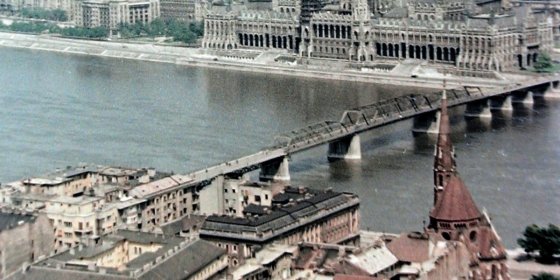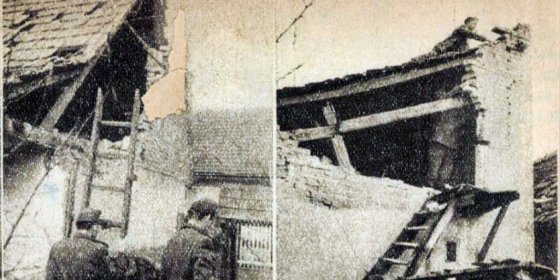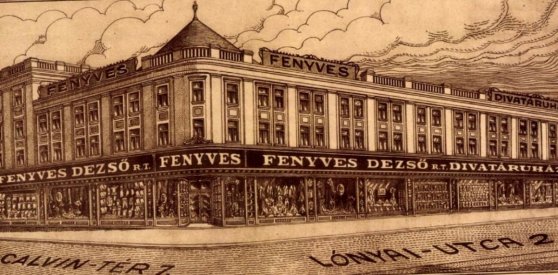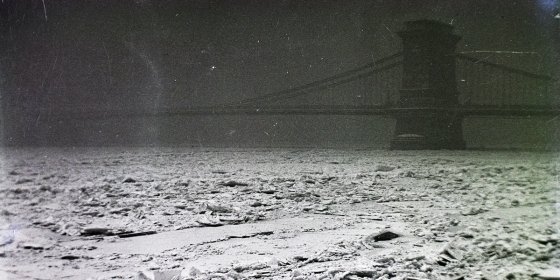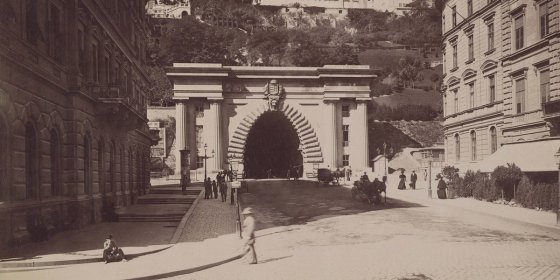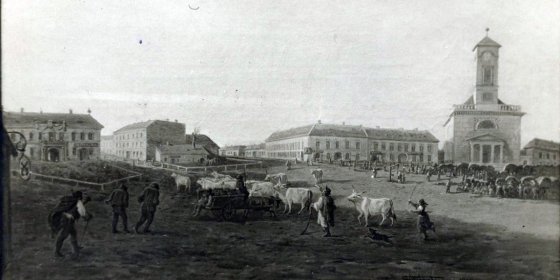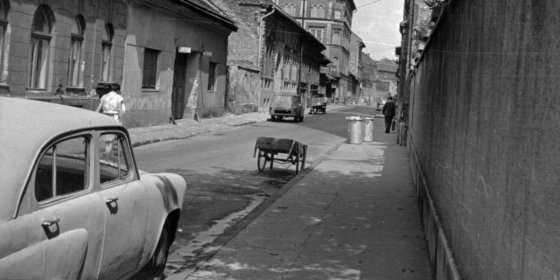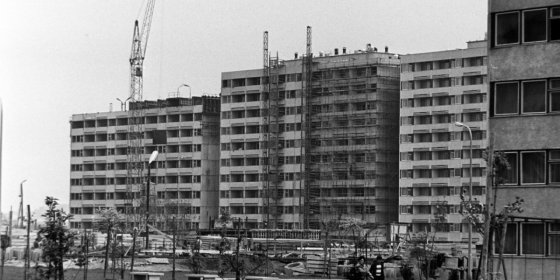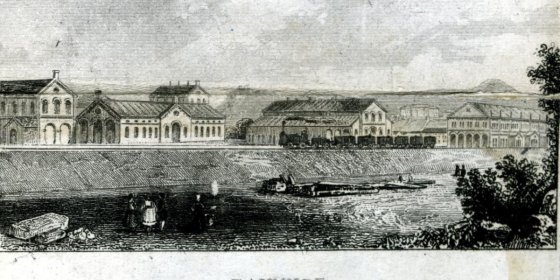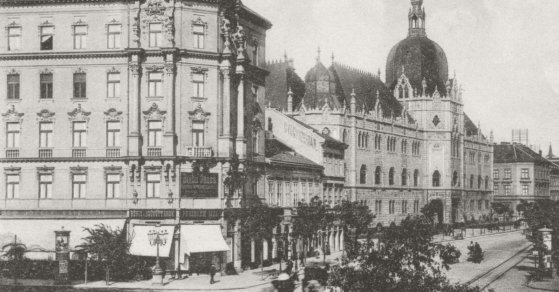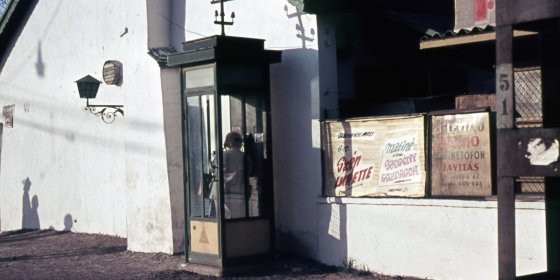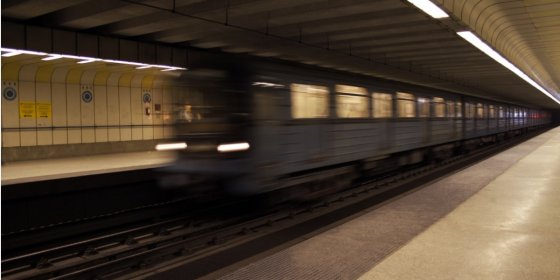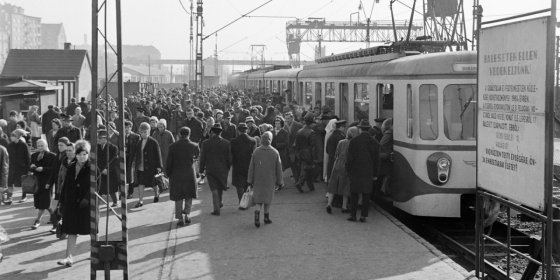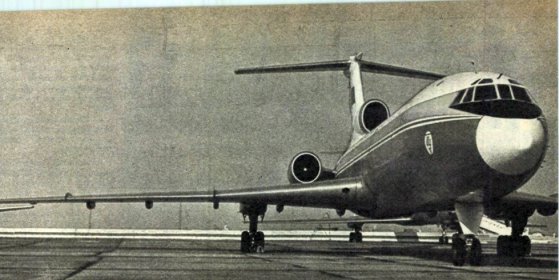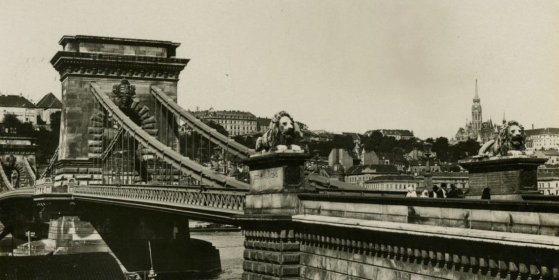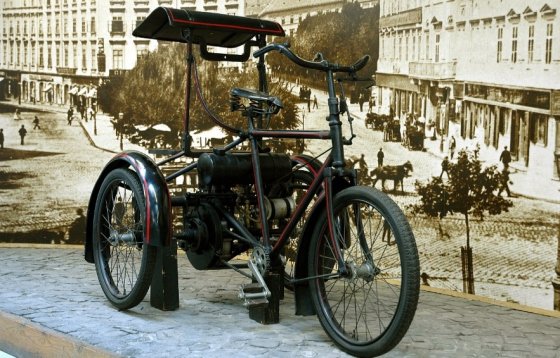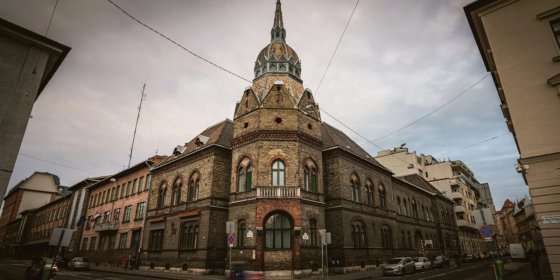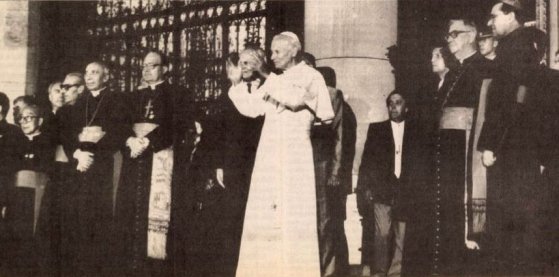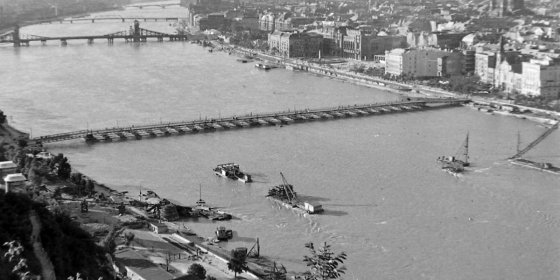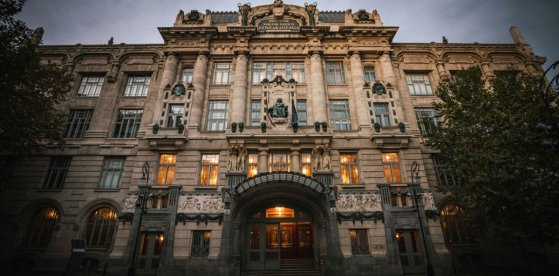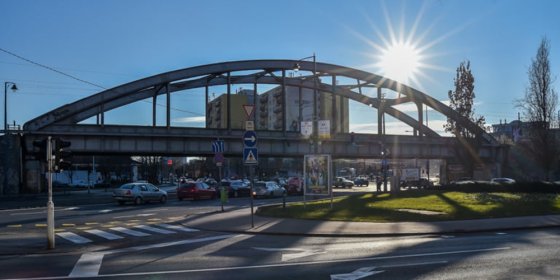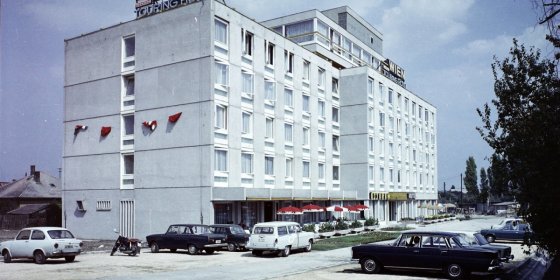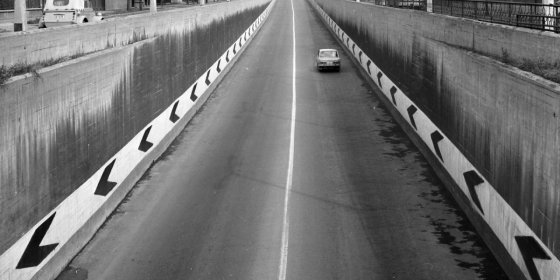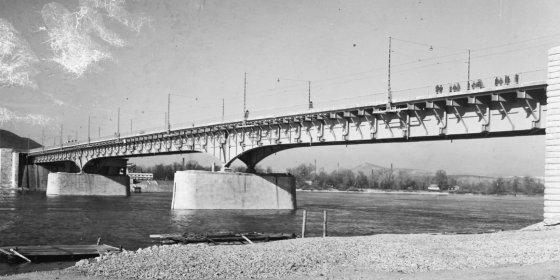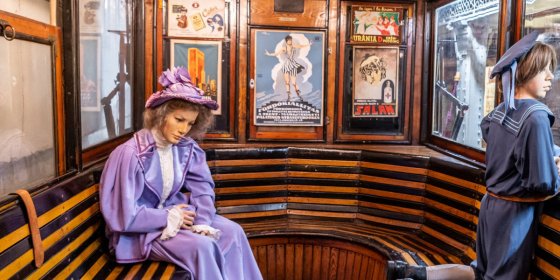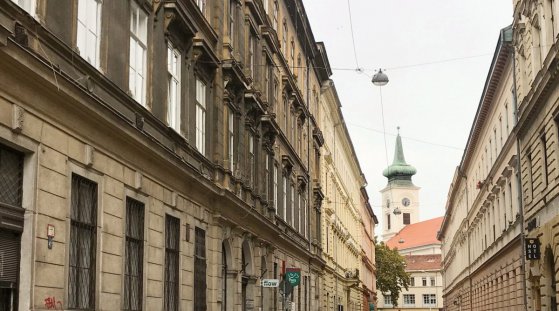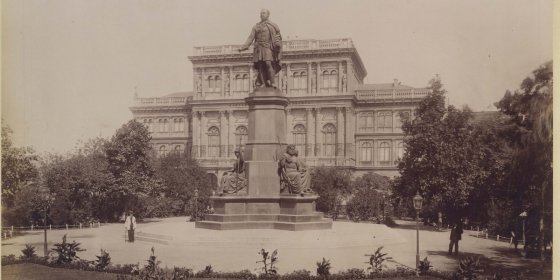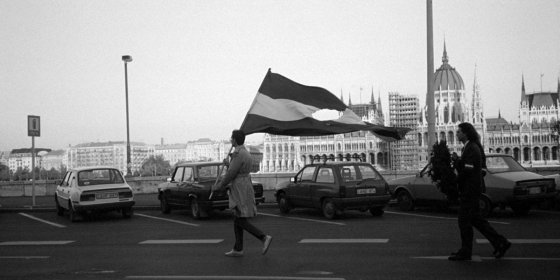 The „intertwined history” of the bridges and the city of Budapest
Which ideas and events have shaped the fate of bridges of Budapest and the cityscape? Alongside many other interesting facts, this question is also answered this newly published book by the Budapest City Archives, which introduces the history of bridges in Budapest.
The „intertwined history” of the bridges and the city of Budapest
Which ideas and events have shaped the fate of bridges of Budapest and the cityscape? Alongside many other interesting facts, this question is also answered this newly published book by the Budapest City Archives, which introduces the history of bridges in Budapest.
histories
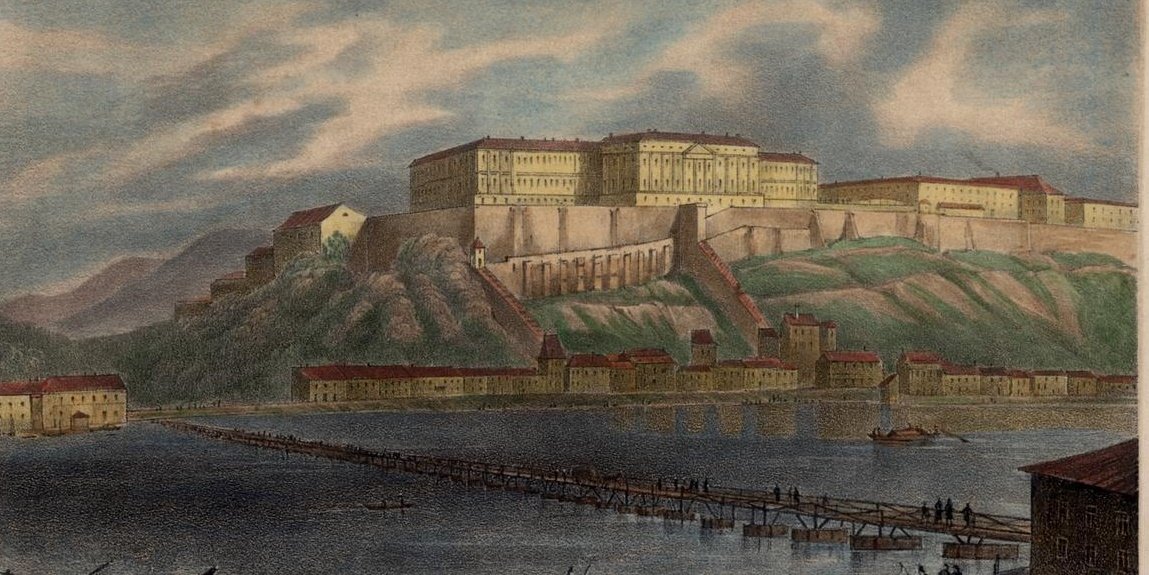 Buda Castle and drinking water: Water pumps designed by Adam Clark completed 165 years ago
Buda Castle and drinking water: Water pumps designed by Adam Clark completed 165 years ago
January 12, 2021 at 12:00 PM
A settlement needs water. And Buda Castle had various water supplies even in the middle ages. The city was supplied with water from the springs of Svábhegy and the Danube. Until the middle of the 19th century, pumps powered by animals pushed the water to the top of the hill. The first engine-powered pumping station in Buda was established 165 years ago, opening in 1856. Its designer was Adam Clark, the engineer that led the construction of Chain Bridge.
The eight-month miracle – Kossuth Bridge completed from scraps 75 years ago
January 10, 2021 at 12:00 PM
Previous articles on PestBuda have detailed how the retreating German forces destroyed all Danube bridges in Budapest. After the war, a series of temporary structures were erected to connect the battle-torn city’s two halves. However, it was obvious that a somewhat permanent structure would be needed. The result was Kossuth Bridge.
Sixty-five years ago an earthquake shook Budapest
January 9, 2021 at 10:00 AM
Recent earthquakes in Croatia have caused more than 100 million HUF damage in Hungary, while some tremors have even been felt in Budapest. Earthquakes are not extremely common in the Carpathian Basin but do occur sporadically. One of the largest recorded tremors in Hungary, which also led to the loss of life, happened on the outskirts of Budapest 65 years ago, in January 1956.
Shop assistants with subscriptions to hairdressers – The Kálvin Square department store
January 8, 2021 at 3:00 PM
The department store is one of Kálvin Square's defining buildings and stands on a plot that once housed a school operated by the Reformed Church. In the interwar years, the city knew the shop as the Fenyvess Department Store. And while it only bore the name for 25 years, many remember the name to this day.
A funeral gave life to the bridge that created Budapest
January 7, 2021 at 9:00 AM
Two hundred years ago, a younger Hungarian hussar officer made a rather reckless statement to a friend. His words had many consequences and changed the lives of many forever. The officer, in fact, was only in a hurry to reach his father's funeral.
A dream of the Reform Period – A tunnel to run through Castle Hill
January 5, 2021 at 3:00 PM
Even when building Chainbridge the builders knew, the Buda bridgehead is in the wrong place, a point which is difficult to reach with a cart or carriage. A solution was needed, but Castle Hill stood in the way. Eventually, a company was founded to break through the hill 175 years ago.
Leopold Rottenbiller – Three-term Lord Mayor of Pest
January 3, 2021 at 3:00 PM
Leopold Rottenbiller is one of the most unjustly forgotten politicians of Budapest's history, even though a major road bears the name of the urban leader to this day. He served as the Lord Mayor of Pest for three terms, and not in periods of growth, construction and peace. Despite this, Rottenbiller kept the city working. His second term began 160 years ago.
Fifty years ago large-scale plans to redesign Józsefváros were born
December 30, 2020 at 9:00 AM
Various plans to redesign the inner sections of Józsefváros and replace the out-dated kitchen and room flats built at the end of the 19th century were floated decades ago. Fifty years ago the Budapest Council adopted a large-scale plan to demolish 3,400 flats. By the time the district already had mixed experiences of how the city centre could be rehabilitated.
When panel housing defined urban development
December 23, 2020 at 10:00 AM
Forty-five years ago, in the last days of 1975, a new urban planning regulation was adopted in Budapest. The purpose of the provision was to provide an appropriate framework for the construction or housing estates and urban development, while also designating development zones and the number of buildings to be erected.
A train to the imperial city – Budapest–Vienna train line opened in 1850
December 20, 2020 at 9:00 AM
1850 was a dark year for Hungary. After the war of independence was lost, so was freedom. Haynau's reign of terror through thousands into prison. But in 1850 a dream came true. A rail connection was completed between Pest and Vienna reached.
The birth of Lottóház – Historic buildings lost to the 1956 revolution
December 10, 2020 at 2:00 PM
A small plaza can be found at the junction of Ferenc Boulevard and Üllői Road. It was named in 1996. It is known as Angyal István Park. There is no inscription to indicate this despite a statue of a paper aeroplane being erected in 2014, and most passers-by do not know that the city honoured one of the heroes of the 1956 revolution, the leader of the Tűzoltó Street insurgents, with the square 24 years ago. And perhaps even fewer know that before 1956 the square did not even exist, but was covered by three residential buildings standing side by side.
Phone lines once defined the Budapest real estate market
December 7, 2020 at 10:00 AM
Life today is unimaginable without a phone, yet not so long ago people could wait decades for a connection to be brought to their flat. Those who had landlines could consider themselves privilege, and those selling flats with one could ask a higher price. Thirty years ago, a new telephone exchange in Csepel with 18,000 lines was a huge step forward. Nevertheless, it seemed that it would only be possible to connect half of the flats in the city with phone lines by 2000.
Construction of metro line 3 completed thirty years ago
December 5, 2020 at 9:00 AM
The construction of metro line 3 was a massive undertaking. After 20 years, it is still not fully completed, while its existing sections have been under constant renovation for years. Its last phase was opened 30 years ago, in December 1990.
Fifty years since the new trains arrived some are still in use on suburban railway lines
December 2, 2020 at 10:00 AM
Over the last few days, a number of articles have surfaced regarding the two companies that remain in competition to provide the new trains for the suburban railway lines. The new vehicles are much needed, as most of the current trains were bought in the 1970s. The oldest of them has been in use on the Csepel line for 55 years.
A Tu-154 aircraft first visited Budapest 50 years ago
November 29, 2020 at 10:00 AM
The introduction of a new type of aircraft has always been a great sensation in Budapest. It was no different when the most modern passenger aircraft of the time, a product the Soviet aviation industry, the Tu-154, arrived in the city 50 years ago.
The new Chain Bridge opened 105 years ago
November 27, 2020 at 10:00 AM
The Chain Bridge, as seen today, is not the structure that István Széchenyi dreamed of and which was built to the plans of William Tierney Clark. The Chain Bridge we love and use today is 105 years old and was opened on 27 November 1915.
Motorised Tricycles – A new postal service arose 120 ears ago
November 25, 2020 at 9:00 AM
The Hungarian Postal Service played a central role in the motorisation of Hungary. The company first began using foreign vehicles, but 120 years ago, the first Hungarian-made vehicles entered into service. These early attempts were not even cars, but motorised tricycles, powered by Hungarian internal combustion engines.
Tens of thousands of fires – A short history of the 150-year-old Budapest Fire Brigade
November 24, 2020 at 12:00 PM
Founded in 1870 through the initiative of Ödön Szécsenyi professional firefighters have been battling flames in Budapest ever since. Over the last 150 years, they have proven themselves not only during fires and catastrophes but through the storms of History during the world wars and the siege of Budapest. Their work is now a fundamental requirement of the city functioning safely.
The only pope to visit Budapest twice: Pope John Paul II
November 23, 2020 at 10:00 AM
Allegations that surfaced recently in the McCarrick report have ignited calls to have Pope John Paul II stripped of his sainthood. The much-revered Pope was the first to visit Budapest, and as a result, has a living memory in Budapest.
Böske Bridge – The story of Petőfi Pontoon Bridge
November 20, 2020 at 9:00 AM
Following the devastation of World War II a series of temporary bridges were constructed in Budapest to ensure movement around the city. One of these was the Petőfi Pontoon Bridge, which was named after the fact that it connected Petőfi Square in Pest, with Döbrentei Square in Buda, not far from the ruins of Erzsébet Bridge. However, the population quickly became to use the slightly more ingenious name, Böske Bridge, Böske being a common Hungarian nickname for Erzsébet or Elizabeth. The name Petőfi Bridge was later inherited by a completely different structure.
A dream shared by Liszt and Erkel – 145 years of the Academy of Music
November 19, 2020 at 2:00 PM
The Hungarian National Academy of Music opened with much ceremony 145 years ago on 14 November 1875. The institution was temporarily housed on the present-day Március 15. Square, Hal Square at the time. It moved into the four-storey palace on Andrássy Avenue in 1879. Its current main building on Liszt Ferenc Square was opened in 1907. Franz Liszt and Ferenc Erkel are the reason that the highest level of music training began in Hungary.
A new bridge in the heart of the 11th District
November 18, 2020 at 9:00 AM
A rail bridge has crossed above the intersection of Tétényi Road – Bartók Béla Road and Karolina Road in the 11th District for 71 years. In connection to the development of the Southern Ring Railway, a longer and wider railway overpass is being built. The goal is to convert the newly gained space underneath into an urban plaza, with trees and greens, and ample room for pedestrians, cyclists and public transport passengers to move through freely.
Built on a freight station: the Millennium City Centre
November 17, 2020 at 9:00 AM
Budapest is a city of constant change. This is especially true for parts of the city that were once industrial centres or served these industries. The decaying remains of 100–150-year-old factories are often called rust belts. While the future of many of these areas remains uncertain, some examples have been completely transformed and given an entirely new lease on life. Over the past 25 years, the Millennium City Centre has sprouted where the Danube-Bank Freight Station once stood and has become such an area.
When Five Year Plans decided the future of Budapest
November 16, 2020 at 9:00 AM
Under Socialist rule, the state governed economy operated according to what were called five-year plans. These determined the type and volume of goods and raw materials to be produced in the next five year period. However, these should not be equated with a well thought out business plan, as they were not based on realistic demand and business opportunities.
Fifty years in the works: Airport express road to become dual-carriageway
November 11, 2020 at 11:00 AM
Although not many people are travelling by plane during the pandemic, everyone agrees that better transport is needed between Liszt Ferenc International Airport and the Budapest city centre. A new rail connection to the airport is in the works, and now a design tender for expanding the expressway to the airport to two lanes in each direction has been announced. But how has Budapest grown out of the road that served the airport for decades?
Once known as Stalin Bridge, Árpád Bridge turns 70
November 9, 2020 at 9:00 AM
Its construction was abandoned during the Second World War. It bore Stalin's name for six years and was the longest bridge in the country for years. Árpád Bridge is now seventy years old.
45 years under ground – A museum on Deák Square about the Millennium underground Railway
November 4, 2020 at 3:00 PM
A museum housed in an abandoned underground tunnel, filled with original rolling-stock, and a slew of objects from the history of one the world's oldest underground railways. All of this for the price of a single ticket in the middle of the city, under Deák Square. The Millennium Underground Museum opened 45 years ago.
A forgotten house – The origins of Eötvös József College
November 4, 2020 at 9:00 AM
A small street near Kálvin Square bears the name of Pál Gönczy, a writer on educational subjects and teacher at the Reformed Secondary School of Pest. In 1895 a small teacher training institute named after Gönczi's former ministerial superior, Count József Eötvös was opened here. At the time it was known as Csillag Street. Loránd Eötvös founded the College, and its first headteacher was Géza Bartoniek. They are the protagonists of the first 15 years of institution's history, but the small building where early students worked with their professors until 1911, was forgotten.
The Hungarian Academy of Sciences turns 195
November 3, 2020 at 5:30 PM
The imposing main building of the Hungarian Academy of Sciences stands on Széchenyi Square. The institution was founded after almost 100 years of proposals, planning and negotiations. Eventually, a 34-year-old Hussar Captain donated the money needed to create it, 195 years ago.
A glance into the past – Budapest in 1990
October 31, 2020 at 9:00 AM
For those who have always lived in Budapest, the changes of the last thirty years may not be obvious, the buildings lost and built every little change. Some may not even remember what was on people's minds during the fall of communism, or even just how everyday life happened. On the thirtieth anniversary after the creation of the democratic Budapest Local Council take a glance back in time with PestBuda.
More articles
 The „intertwined history” of the bridges and the city of Budapest
Which ideas and events have shaped the fate of bridges of Budapest and the cityscape? Alongside many other interesting facts, this question is also answered this newly published book by the Budapest City Archives, which introduces the history of bridges in Budapest.
The „intertwined history” of the bridges and the city of Budapest
Which ideas and events have shaped the fate of bridges of Budapest and the cityscape? Alongside many other interesting facts, this question is also answered this newly published book by the Budapest City Archives, which introduces the history of bridges in Budapest.
 The Bridge Report, which brought a turning point in the history of Budapest
A travel report that changed the history of Pest and Buda, as well as Hungary. The little book contributed to the change of half a thousand years of legal customs and the implementation of an investment of unprecedented size and technical quality. This book was The Bridge Report [Hídjelentés in Hungarian].
The Bridge Report, which brought a turning point in the history of Budapest
A travel report that changed the history of Pest and Buda, as well as Hungary. The little book contributed to the change of half a thousand years of legal customs and the implementation of an investment of unprecedented size and technical quality. This book was The Bridge Report [Hídjelentés in Hungarian].
 Drama on the university wall - The heroic monument was planned 95 years ago
In the constant hustle and bustle of the Egyetem Square in Pest, the students may not even notice the monument that decorates the short section of wall between the church and the central building of ELTE. However, it commemorates their predecessors, the heroes who fought for their country in World War I, and those who heroically helped them. The first design of the dramatically collapsing soldier was born in 1928, ninety-five years ago.
Drama on the university wall - The heroic monument was planned 95 years ago
In the constant hustle and bustle of the Egyetem Square in Pest, the students may not even notice the monument that decorates the short section of wall between the church and the central building of ELTE. However, it commemorates their predecessors, the heroes who fought for their country in World War I, and those who heroically helped them. The first design of the dramatically collapsing soldier was born in 1928, ninety-five years ago.

